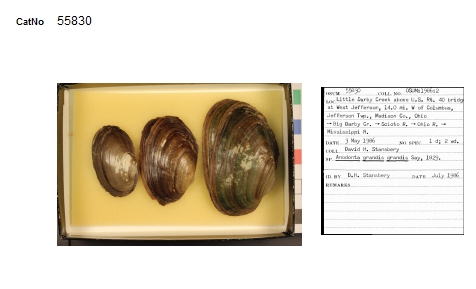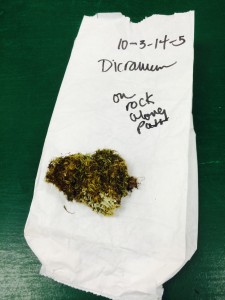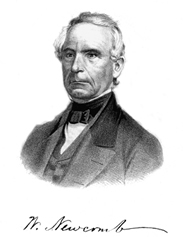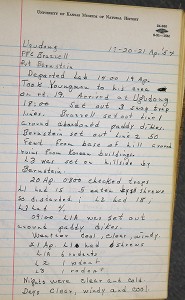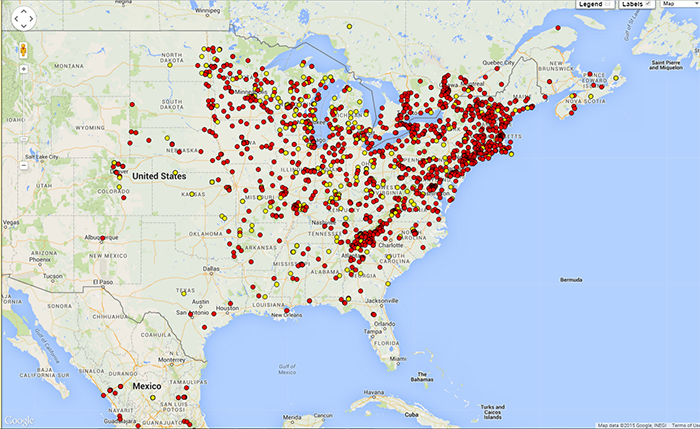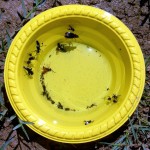Why are the ‘toms mad? Might have to do with the fact that madtoms are so small and have a hard time competing with their larger con-familials (like Bullhead Catfish and Channel Catfish) for space and food. But connate with several other small animal species they make up for their small size with a nastily painful poison sting. Ask any catfish aficionado, or even a neophyte; and they will tell you that they pay careful attention to the sharp spines the catfishes carry at the front of their dorsal and pectoral fins. Whereas catfishes of the North American Ictaluridae genera other than Noturus lack the actual venom, those other genera do carry bacteria on their spines that can cause infection in the wound. The madtoms secrete their venom in a sac at the base of their pectoral spine. When threatened the madtoms lock their pectoral spine in an erect position, causing the sac to rupture and releasing the toxin into the water.
Another character that typifies smaller animals is their habit of remaining in the shadows. Madtom species are quite furtive, hiding under rocks and logs or in crevices including crayfish burrows. Like other catfish genera they tend to be most active at night. A savvy madtom collector sallies forth in the darkness with a lantern that attracts the bewhiskered nocturnals like moths to a flame. The best time for collecting many madtom species is in the cooler months of Autumn, up through December, when they congregate en-masse out in the open. Madtoms spawn in late spring through summer, so could it be they carry out this excursion in the colder season for the simple reason that many larger predators have moved downstream to deeper waters?
This highly cryptic group of catfishes contains several species with populations that are imperiled to varying degrees. Some, like Ohio’s Scioto Madtom, are Extinct while many are Endangered, Threatened or Of Special Concern at the State to Federal level. Noturus species occupy a wide array of habitats but all rely on aquatic insects for their food. Images of a few of the madtom species vouchered in the OSUM Fish Division are posted below.
OSUM 35531 Noturus flavipinnis Yellowfin Madtom. Several populations of this species are imperiled or extirpated. Listed as Federally Threatened. They were successfully reintroduced by Conservation Fisheries International in Tennessee.
OSUM 61379 Noturus munitus Frecklebelly Madtom. Uncommon, declining in some areas of five small, disjunct populations in Gulf Coast drainages.
OSUM 103721 Noturus flavus The Stonecat Madtom is one of the most abundant, as well as the largest madtom species in Ohio with populations across the Mississippi River and Great Lakes drainages in the U.S. and lower Canada, frequently found in faster flowing riffles but also in lakes where there is at least a moderate current.
Noturus flavus Stonecat Madtom, photo by Uland Thomas.
OSUM 50143 Noturus insignis Margined Madtom. Another widespread species with strong populations throughout the Atlantic Slope drainages in northeastern U.S.
Noturus insignis Margined Madtom from Blackwater River Virginia, photo by Brian Zimmerman.
Noturus eleutherus Mountain Madtom, photo by Uland Thomas. Common in some areas but one of Ohio’s State Endangered madtom species.
OSUM 86131 Noturus miurus Brindled Madtom. Relatively common as madtoms go, prefers better oxygenated waters in streams with gravel or sand, likes to hide in leaves and sticks, also inhabits rocky lakeshores.
Noturus miurus Brindled Madtom about to be released/reintroduced from my hand after a trip to Leading Creek in a cooler.
Noturus gyrinus Tadpole Madtom, photo by Brian Zimmerman. The Tadpole Madtom occupies quieter waters with sticks and other woody debris, and tolerates muddy, silty areas better than most other madtoms.
Noturus elegans Elegant Madtom, from Russel Creek Kentucky. Photo by Ben Arthur. Locally common albeit only found in the Green River drainage of Kentucky. Note the sharp barbs on the rear of the pectoral fin spine that make it particularly hard to remove catfishes from a net!
About the Author: Marc Kibbey is Assistant Curator of the OSU Fish Division at the Museum of Biological Diversity.












